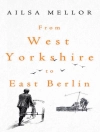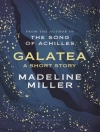Richard Francis Burton’s ‘1001 Nights’ is a captivating rendition of the classic Middle Eastern collection of folk tales, originally known as ‘One Thousand and One Nights.’ This extraordinary work merges an accessible narrative style with rich, descriptive prose, immersing readers in a world of passion, adventure, and intrigue. Burton’s translation is marked by his keen attention to the cultural nuances and moral complexities embedded in the stories, reflecting the historical context of a 19th-century British audience’s fascination with the exotic and the unknown. The vibrant tapestry of tales encapsulates a range of themes, from love and betrayal to luck and wisdom, showcasing the narrative tradition of oral storytelling that has endured across cultures and centuries. Burton, a renowned explorer, linguist, and anthropologist, was celebrated for his profound fascination with the East and its rich cultural heritage. His extensive travels through the Middle East and his studies of its societies provided him with an unparalleled insider perspective, allowing him to infuse ‘1001 Nights’ with authenticity. Burton approached the work not merely as a translator but as a literary ethnographer, seeking to shed light on the complexities of a world that was often misunderstood by the West. This edition of ‘1001 Nights’ is highly recommended for readers interested in world literature, cross-cultural dialogues, and the nuances of storytelling itself. Burton’s passionate prose brings timeless tales to life and challenges readers to engage with the vibrant history and culture of the Islamic world. It is a vital exploration for anyone wishing to appreciate the depth and breadth of human experience through the lens of one of literature’s most iconic collections.
Об авторе
Sir Richard Francis Burton (1821–1890) was a polymath of staggering scope, known for his diverse accomplishments as an explorer, translator, writer, soldier, orientalist, cartographer, ethnographer, spy, linguist, poet, fencer, and diplomat. Among his most famous translations is that of ‘The Arabian Nights’—more properly known as ‘The Book of the Thousand Nights and a Night’—a monumental and enduring work that remains a pinnacle of intercultural literature. Burton’s version, published between 1885 and 1888, stands out for its exhaustive footnotes offering cultural and literary context, as well as its unexpurgated and unabashed portrayal of the tales. A scholar of languages, Burton was proficient in over 25 dialects and languages, and his literary style was marked by a fluency that retained the spirit and exotic charm of the original texts. His interest in cultures and customs led him to assume various personas; he is famed for his undercover pilgrimage to Mecca, which was documented in his work ‘Personal Narrative of a Pilgrimage to Al-Madinah and Meccah’. Burton’s translations were, however, often controversial due to their explicit content and candid approach to sexuality, reflecting an openness that was ahead of his Victorian contemporaries. His body of work spans across travel literature, essays, and anthropological studies, infusing scholarly research with personal adventure, which continues to captivate readers and scholars alike.












